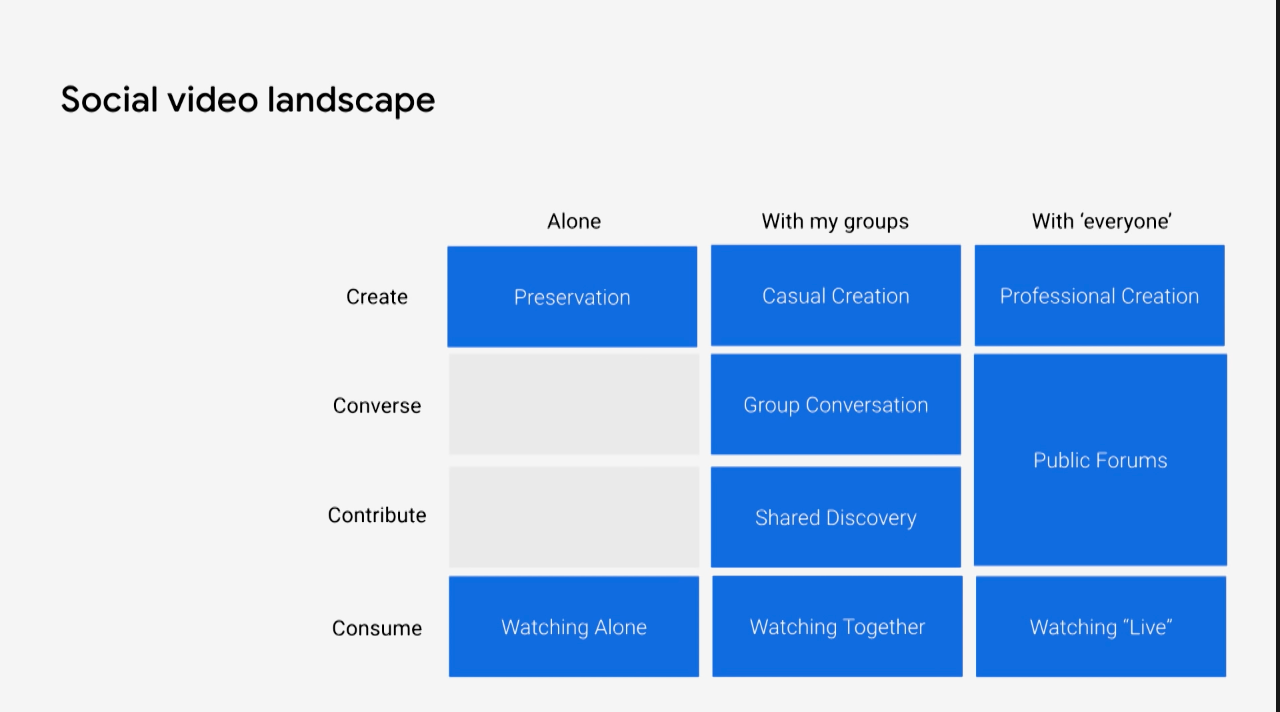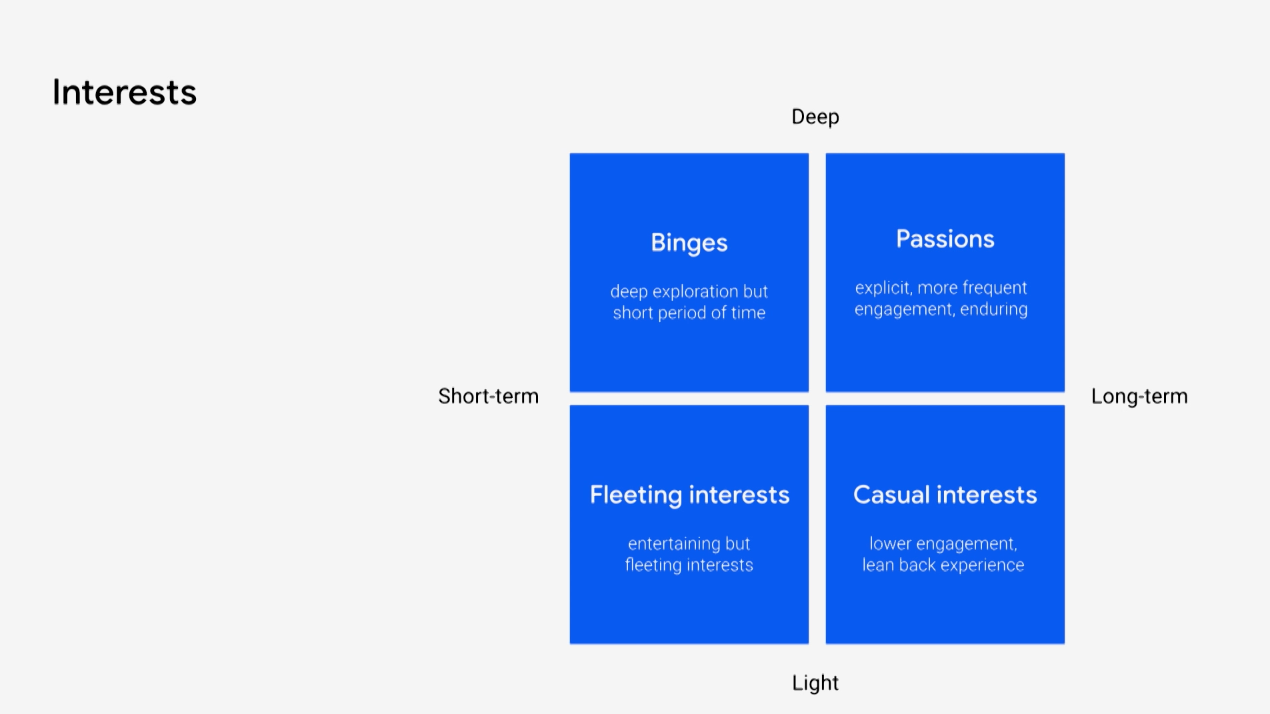Product Visioning
Kevin Dame walks through how his team does visioning at Youtube/Google.
The core of his argument: He noticed product managers didn’t have enough time to ‘vision’, which could be summed up as 2-3 year opportunistic bets, that are clear enough to turn into product. Most work at Google falls into ‘versioning’ (small, iterative improvements) or larger initiatives ‘venturing’ like fiber or loon.
Overall, I was a bit underwhelmed by the process that really looks like any other design process, with maybe a few special caveats. Here are my notes.
The core unit for a visioning team is the pair of a strategically minded designer and a researcher. This is because everything needs to be based on unmet user needs, and the designer makes those tangible.
A broader group needs to be involved. This helps get buy-in later, because everyone understands how the ideas were generated.
Visioning might kick start with a broad statement like “how might we support digital wellbeing”. It’s ambiguous, has no problem or solution.
I imagine the biggest problems with this sort of work is the scoping. It’s easy to feel overwhelmed or take on too much. Kevin says the timing and scope are critical. “All forms of engagement” is too big. “Creator to fan engagement” is clearer and resulted in the community tab in Youtube.
Diverge/Converge: 500+ ideas became 8 concepts which he described as ‘ads from the future’. Amazon press release is similar.
A solidified vision has a few components: A value prop, some key benefits, and some signature concepts which could be far reaching like a new content strategy or business model.
I liked these slides that explained how his teams unbundled vague concepts like ‘social’ or ‘interests’.
What does the social landscape look like, and where should we focus? 
A framework to help unpack interests 